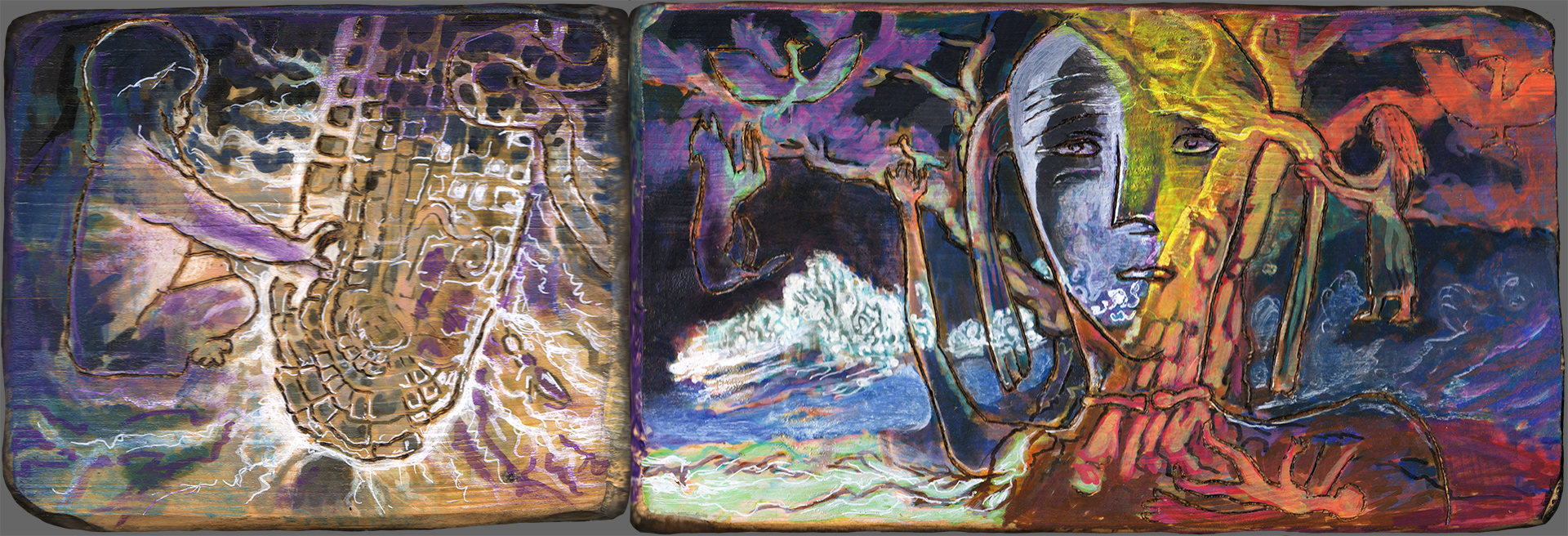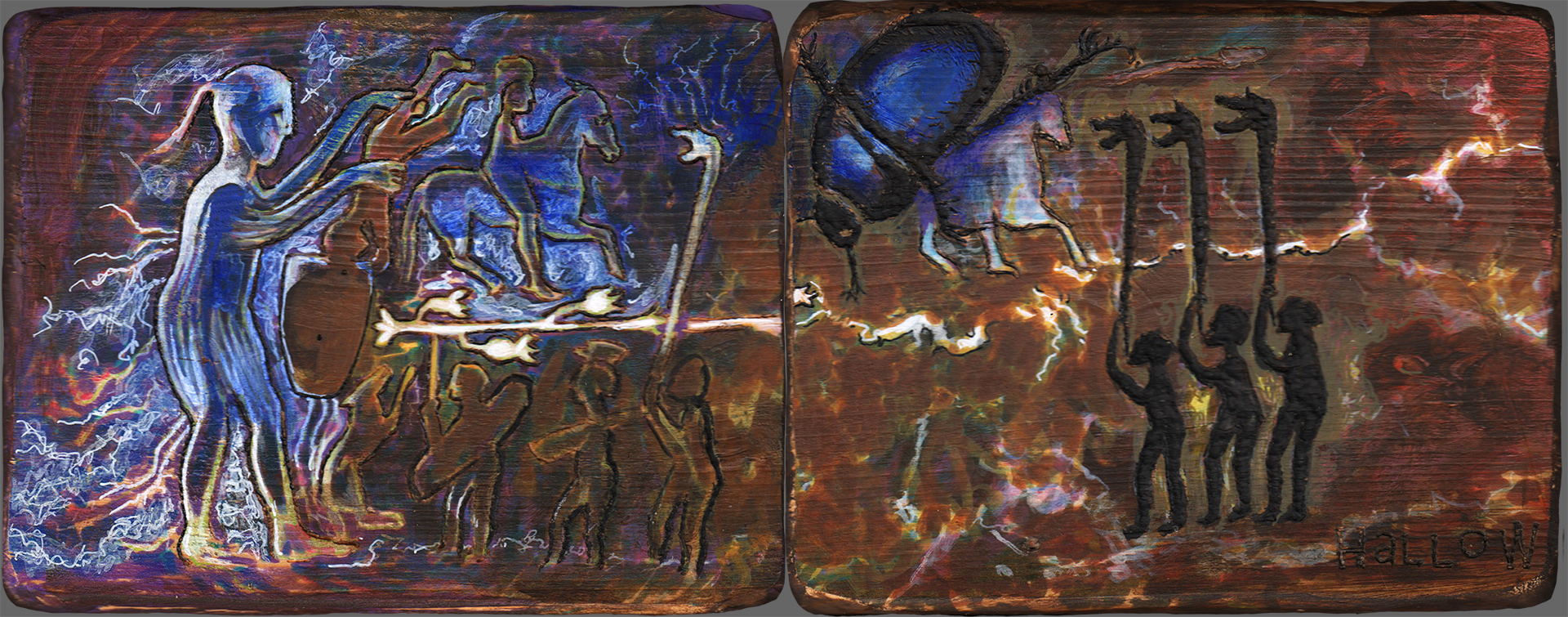
the stirring of life, especially underground among tree root and fungi heralds change and on Feb 1st and the tradition of Brigit's Day meant rebirth. This weave of new beginnings ties intuitively to the tiny mycorrhizae and their function in binding tree life through roots to countless lives in a wood wide web

In any leaf are ancient solar panels, that fire up new life, as the green chloroplasts in the leaf wriggle about in a continuous dance, passing carbon dioxide, water and sunlight onto stacks of thylakoids inside them, where their chemicals interact to produce the sap for the tree and also release oxygen back into the air. On Calton Hill in Edinburgh every year this firedance celebration occurs in honour of Bel, a festivals probably thousands of years old

Just as August begins the season of fruit and nut and harvest, which vital period extends to lichens and every form of organism the 'assembly of Lug' might best be expressed as fullness or turn of the wheel Lug, of the Irish Tuatha de Danaan. Lug was the warrior king, craftsman and holder of justice, and therefore keeper of the subtle balance of this harvest on which all life depends, and the druidic tradition of 'keeper of the woods' extends from this

A glimpse into the underworld is a common thread in the stories of Samhain, when two worlds can be seen at once and death and life interchange. As old as time, this ancient procession descends downward through half remembered wayleaves to begin new lives. Among the giants of the underworld, the insects, lies the heaving underworld of mites, springtails, bacteria and so much else,e their unknown lives vital to life above ground. The carnyx, once heard across vast distances, often as summons to war, can still be understood as herald to the forthcoming death and rebirth of winter
All images here are based on the Gundestrup Cauldron, a silver heirloom once buried in a Danish bog. Its meanings (and reason for burial) are still debated, yet it stands out as wonderful metaphor for the 'calendrical earth-science' of its day